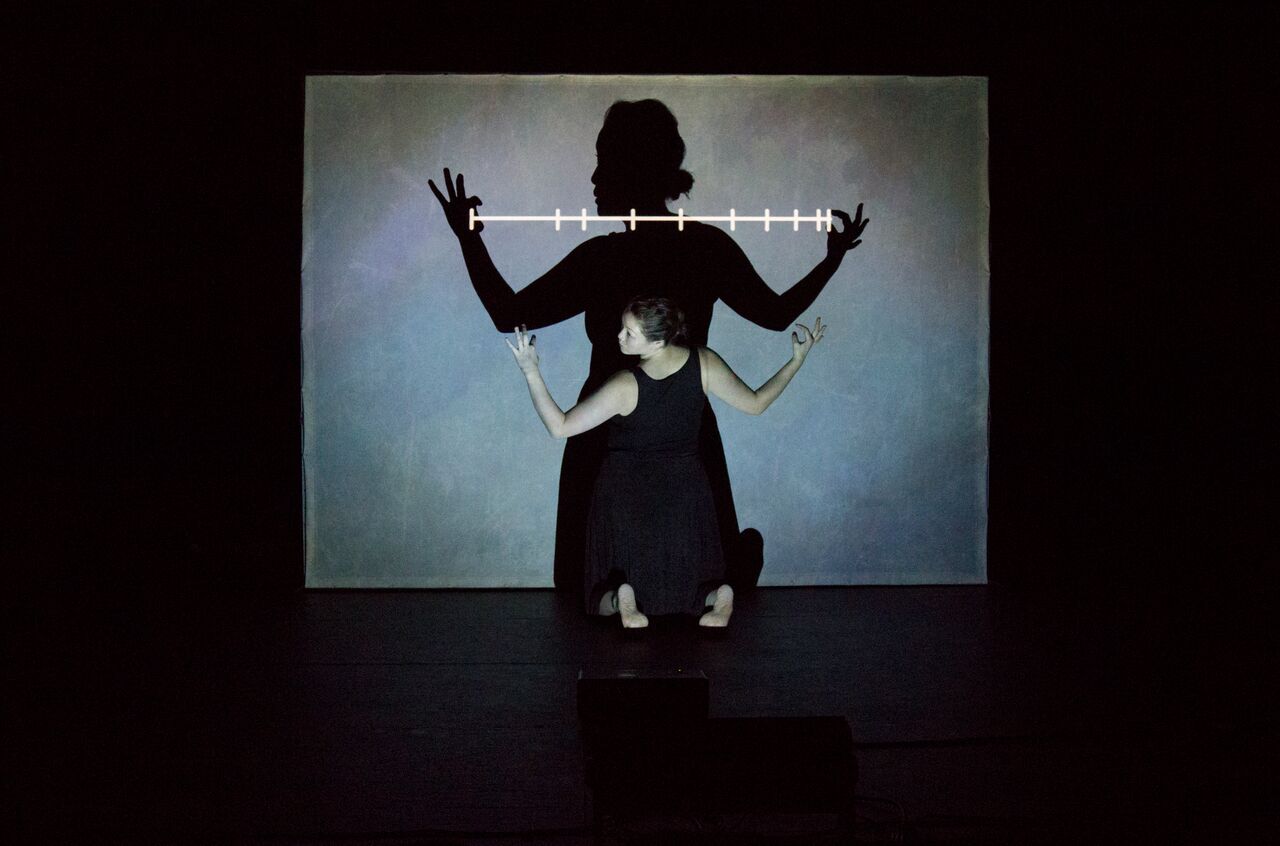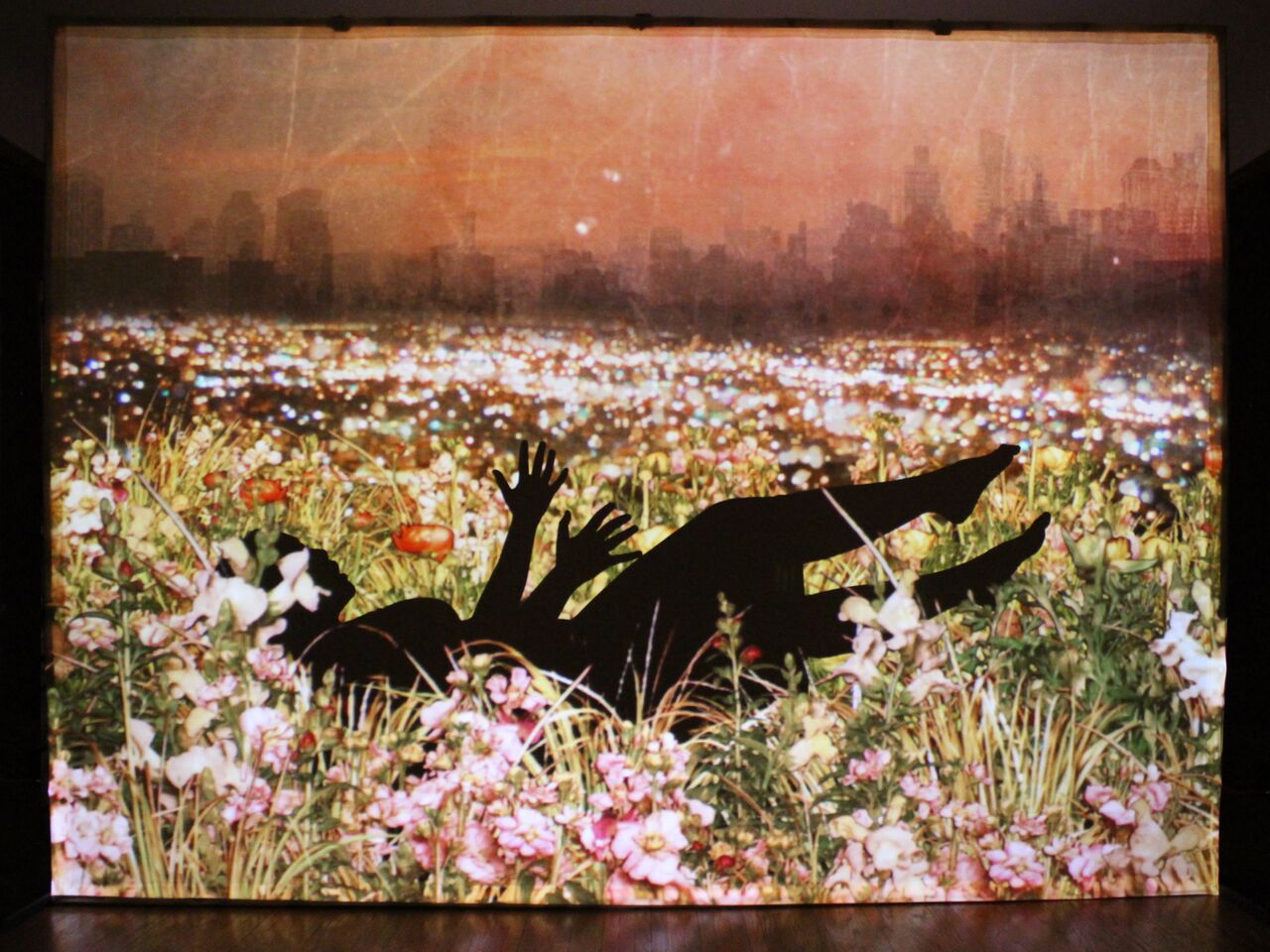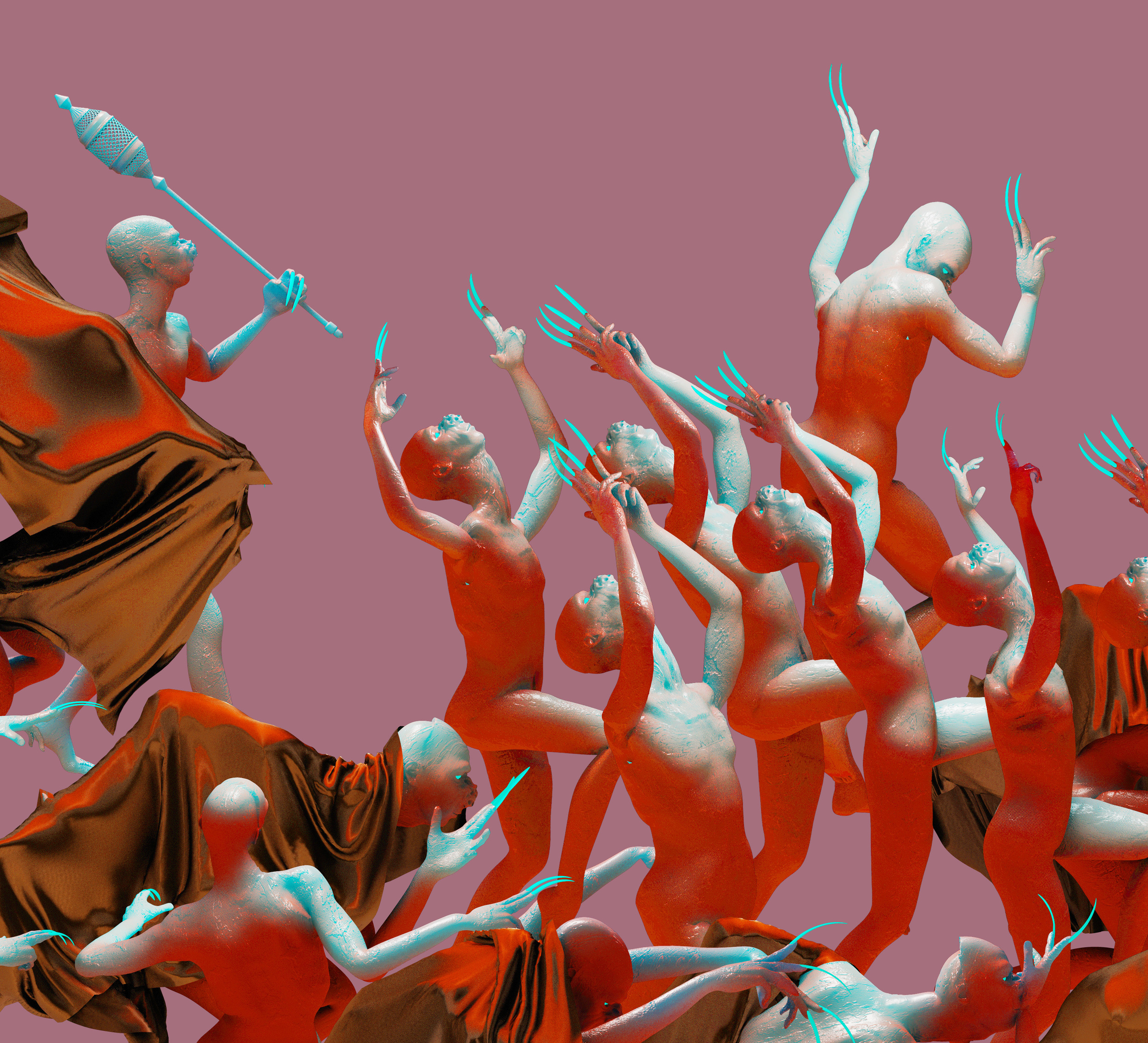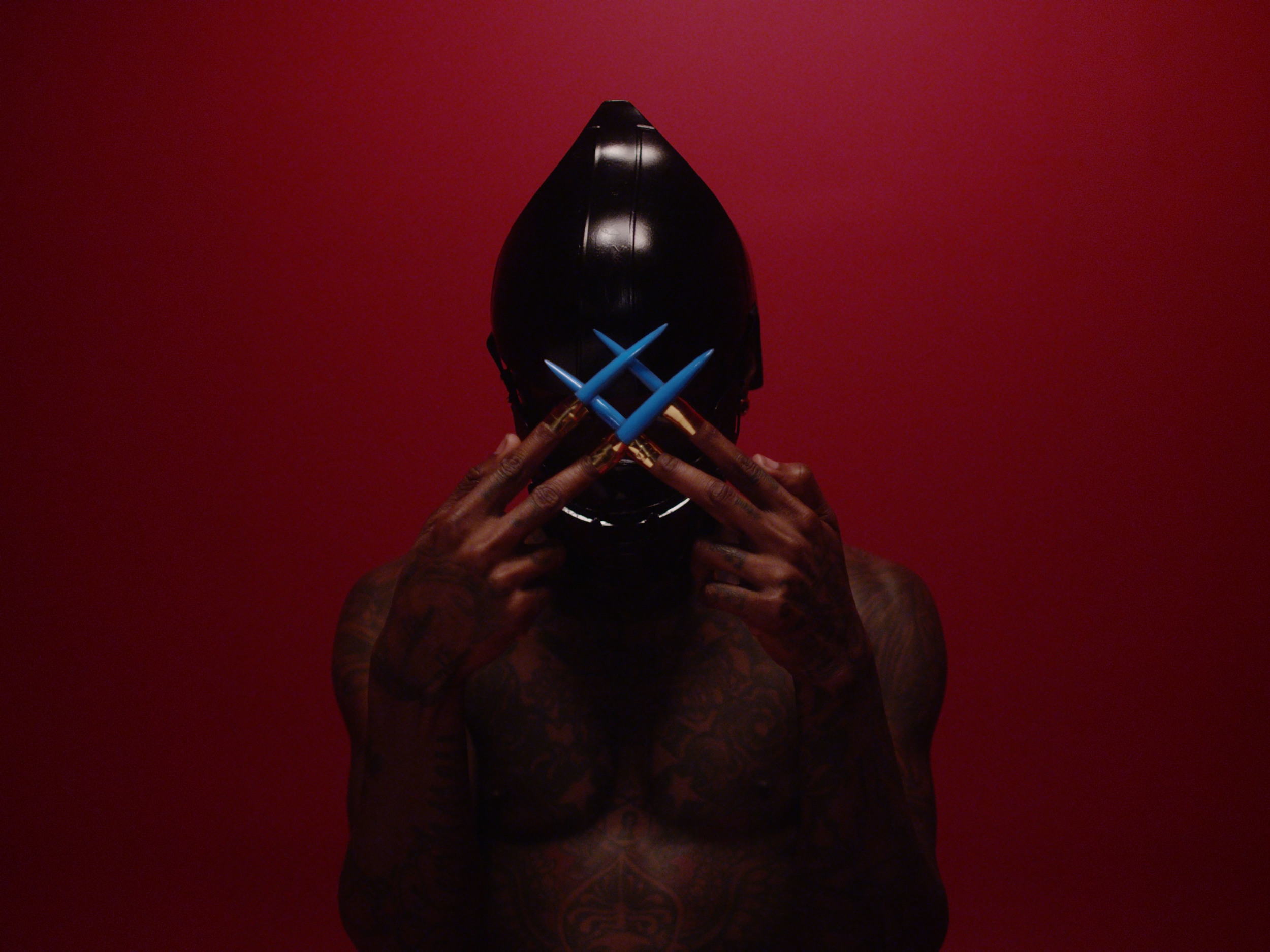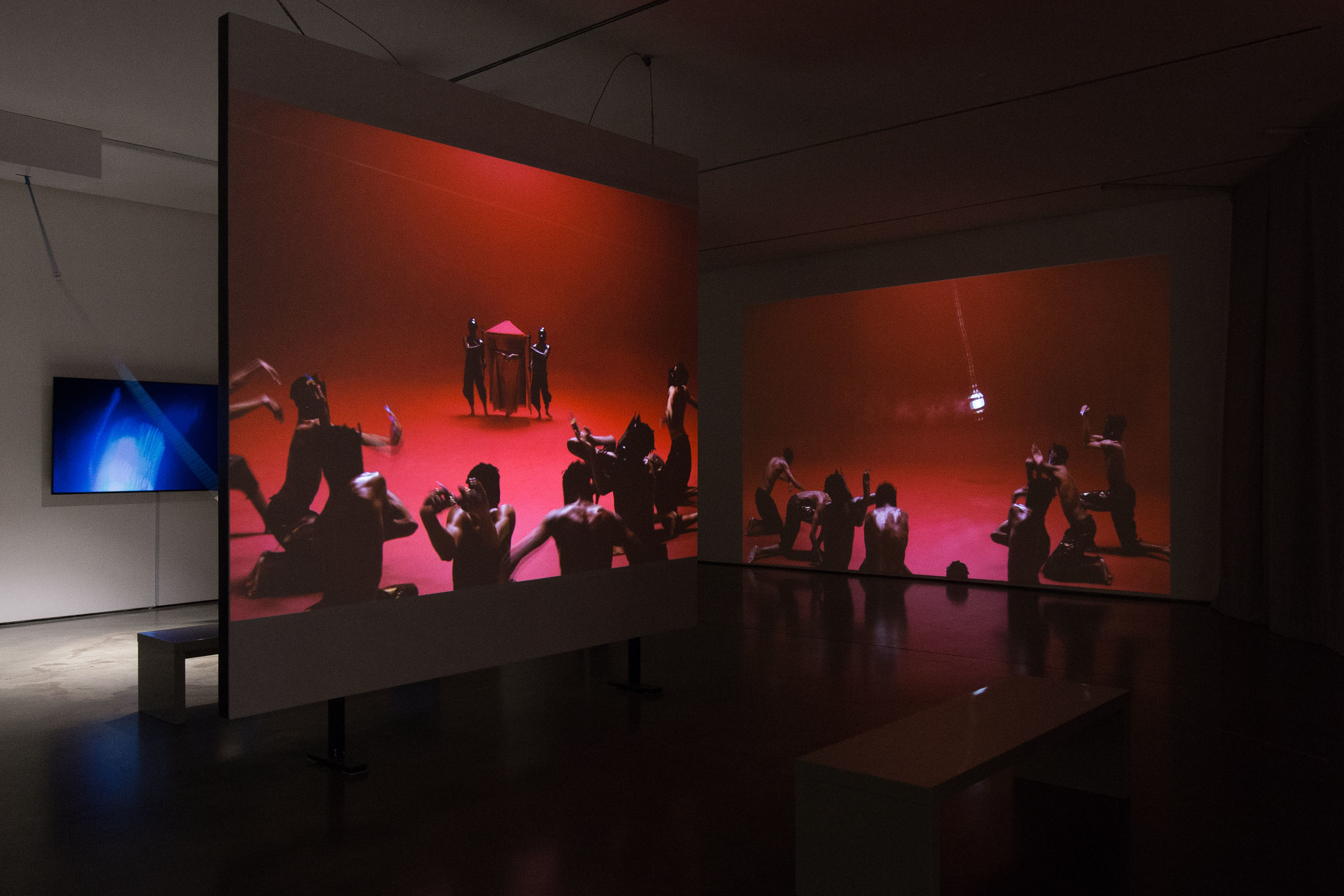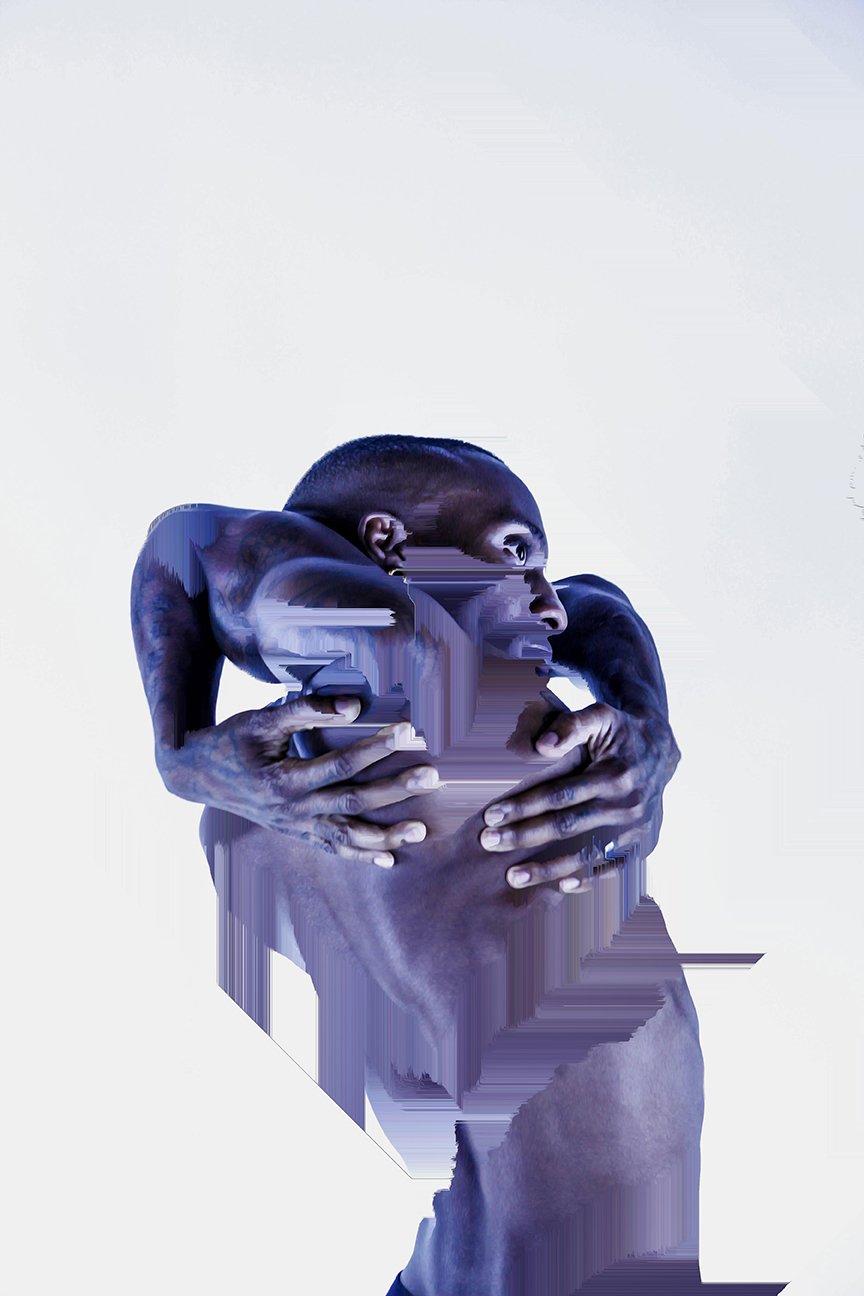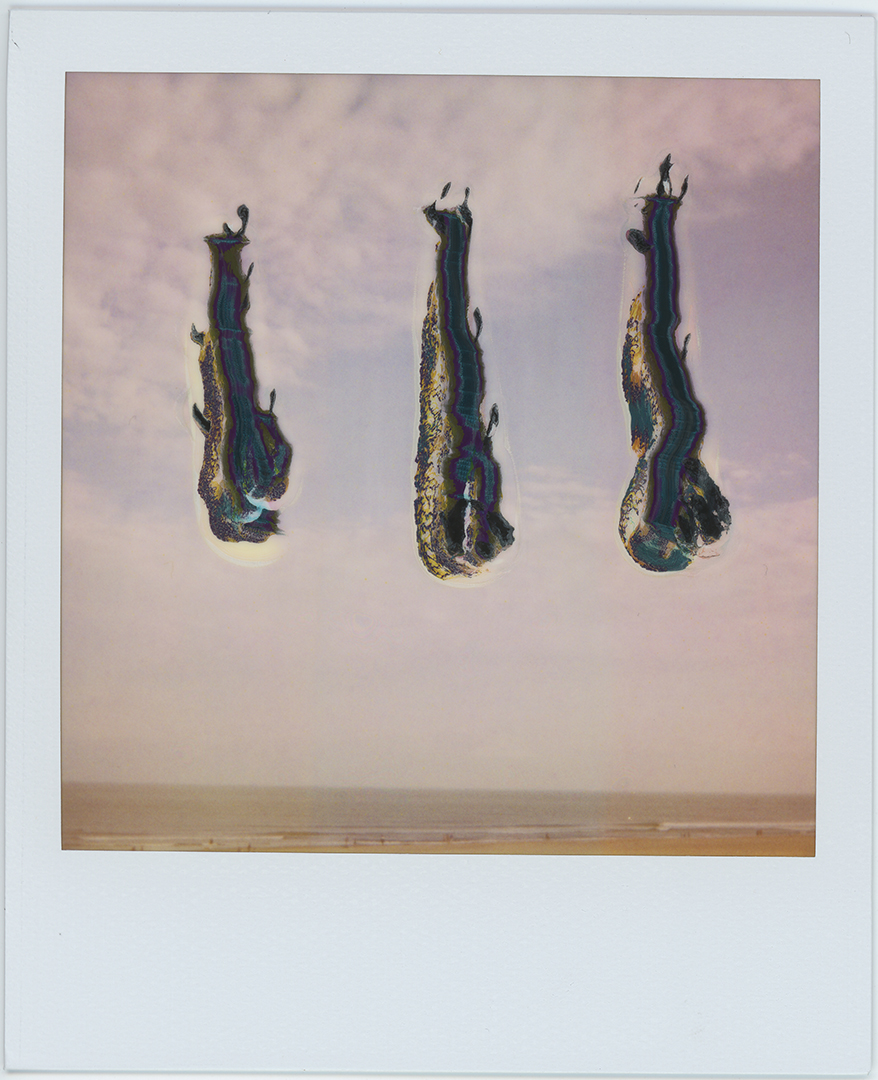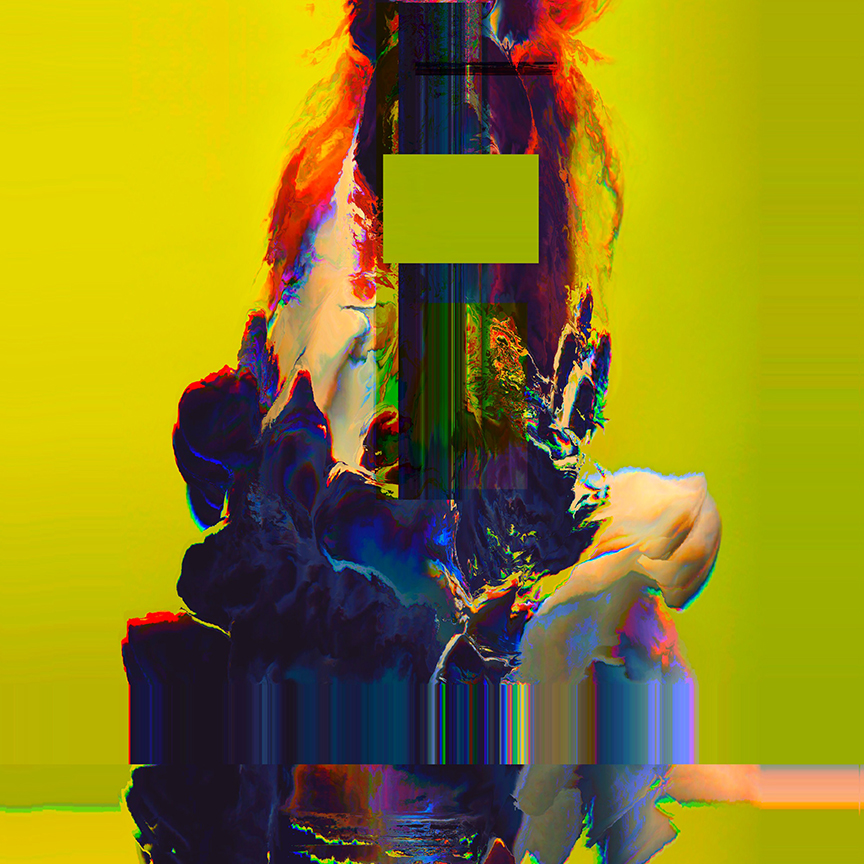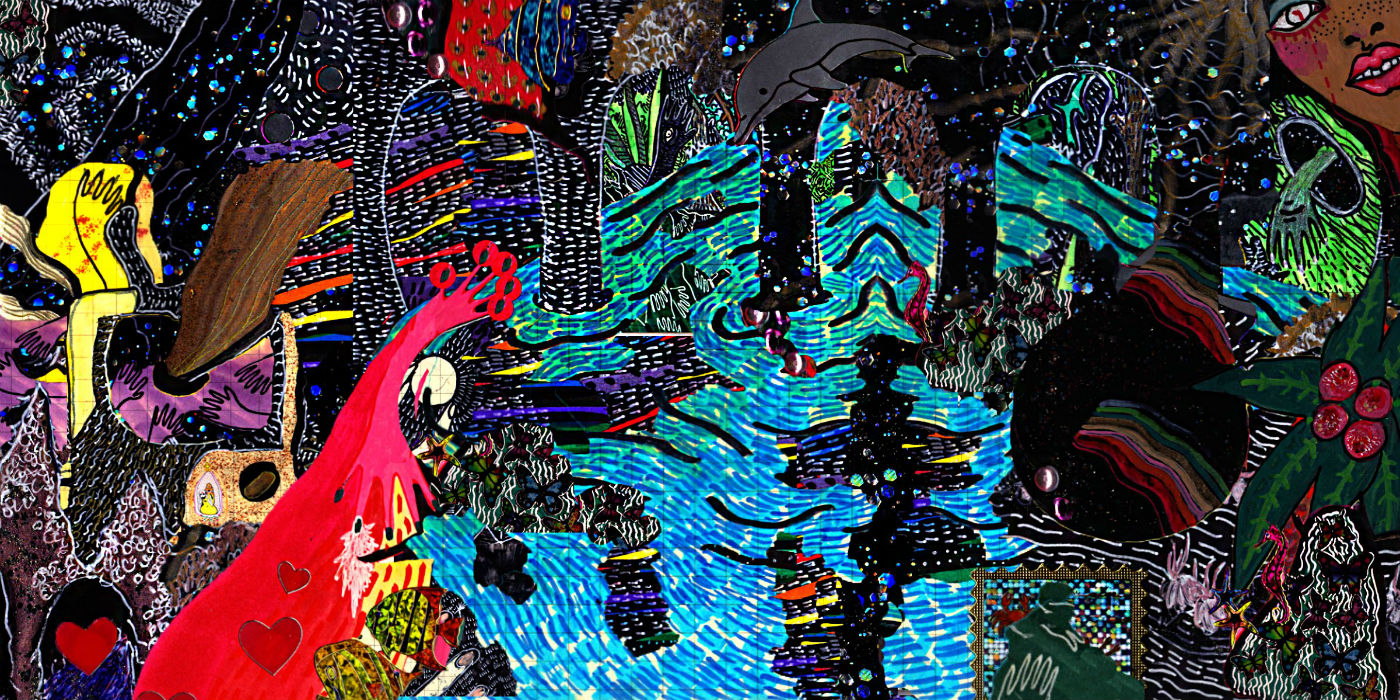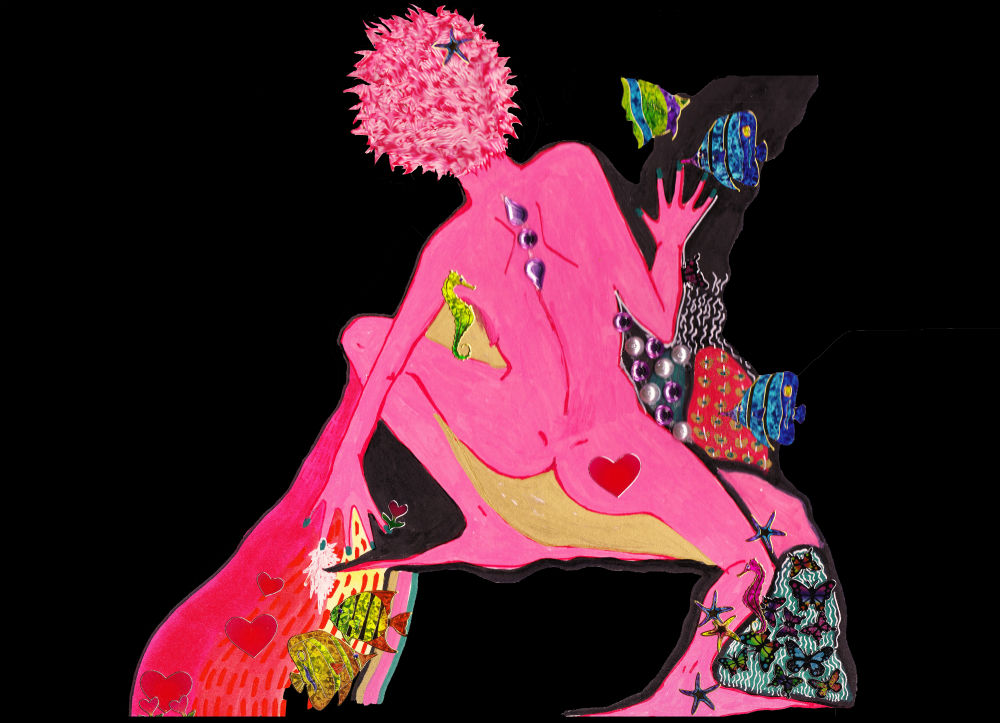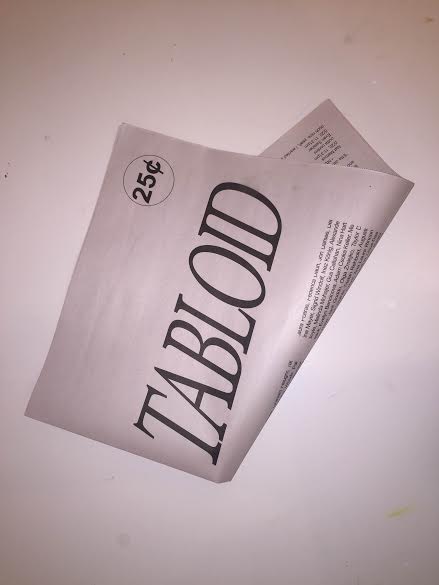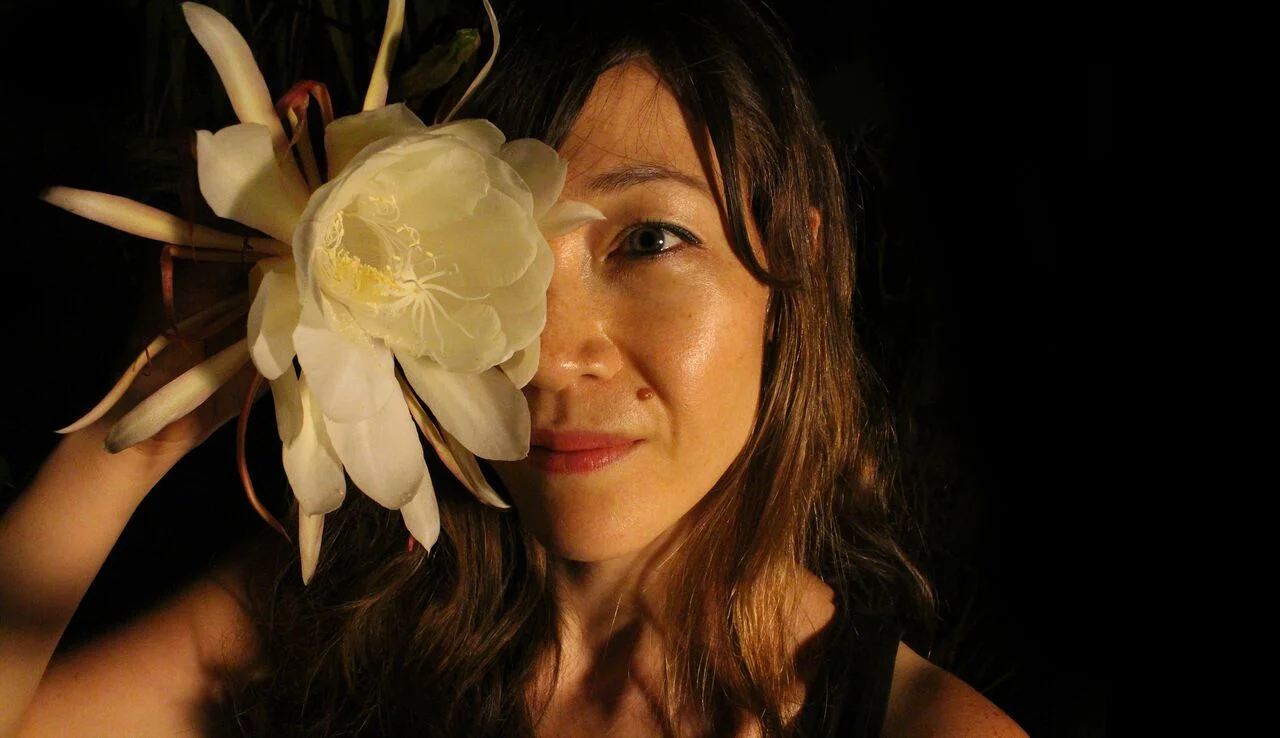


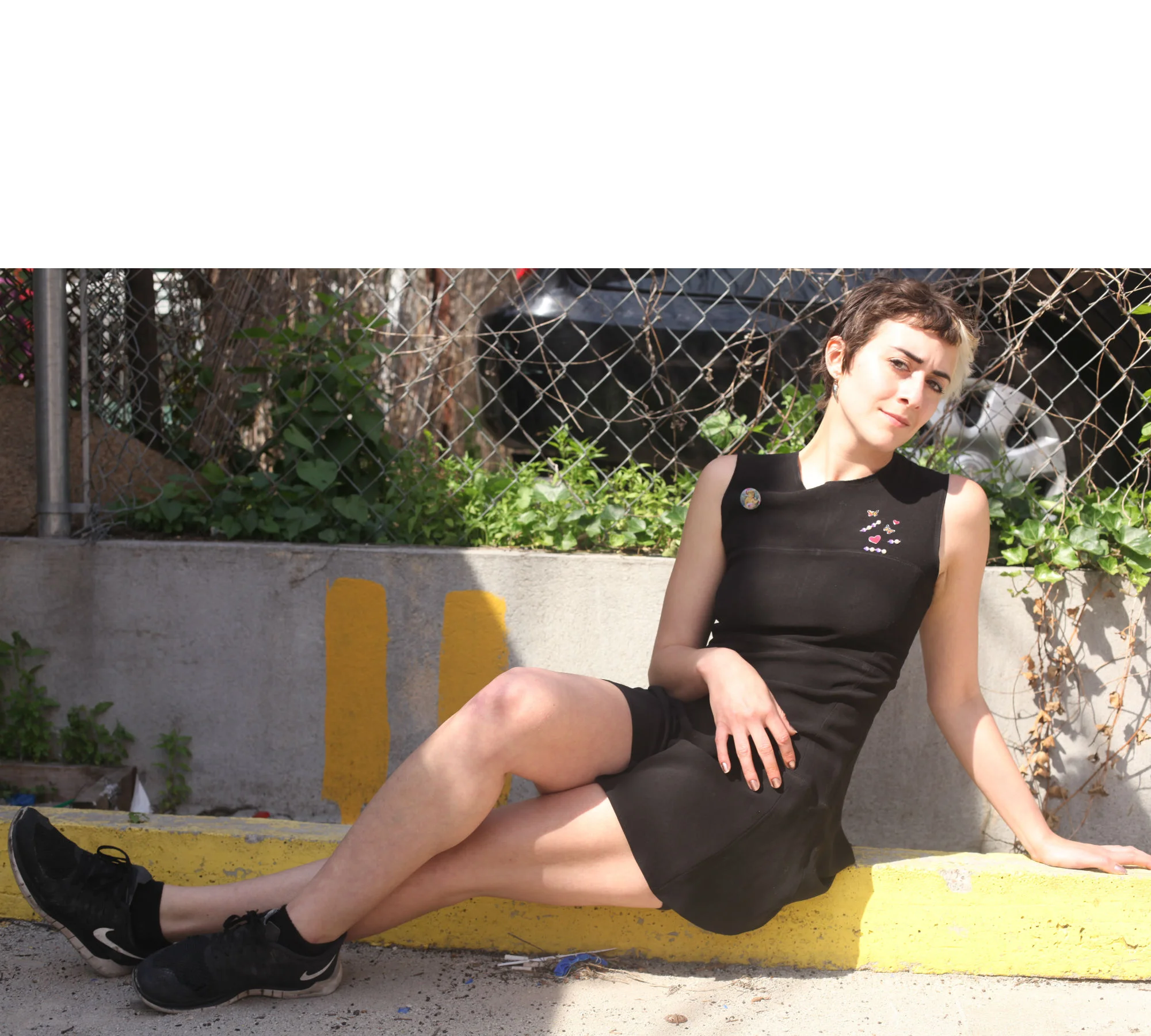

Combining video, animation and the supple movement of herself, Miwa Matreyek is an LA based animator, director, designer and performer who has presented work in MOMA and TEDGlobal. She interacts with her animations as a shadow silhouette, at the cross section of cinematic and theatrical, fanatical and tangible, illusionistic and physical. Miwa is also part of the Cloud Eye Control collective. She's leading a fresh path of inspiration for us.
Work by Miwa Matreyek:
Image credits (L-R): 1. Gia Goodrich, 3. Eugene Ahn, 2&4 courtesy of Miwa.
Miwa Matreyek nominated the filmmaker and artist Andrew Thomas Huang:
I’ve been admiring Andy’s work for a number of years. I love the kinds of transformations he is able to achieve in his work, often a beautiful mix of fantastical, primal, visceral, and playful. Much of his work connects to something surreal but earthy, from Bjork embodying the spirit of a sputtering and exploding volcano in Mutual Core, to Thom Yorke shifting and crumbling in a desert of undulating sand dunes in Before Your Very Eyes. I love that he makes the viewer viscerally experience something in-between mythology and the natural world, something that feels larger than life, something that feels like a muscle memory from a long gone dream or nightmare. Whether these spaces be metaphors (the volcanic rock creatures in Mutual Core) or real spaces (locations in Iceland for Black Lake and Stonemilker), they are infused with an emotion and spirit that is other than human.
This is something I try to approach in my own work as well, so I feel a strong connection and inspiration in Andy’s work.
“I love the kinds of transformations he is able to achieve in his work, often a beautiful mix of fantastical, primal, visceral, and playful.”
I recently saw a screening of his new series of videos, Interstice. I was excited to see these films that are more grounded in real performers and physical material (as opposed to work inherently infused in VFX) that can still create an otherworldly universe of transformation - as if every movement is an unknown ritual, and every object is possessed with a spirit. In the Q and A following the screening Andy talked a bit about his original inspiration for the films being Chinese lion dances - and the idea that you can see the dancers’s legs below the lion costume, but their bodies are part of an animated spirit for something else. I can definitely see this with Interstice, where the (superhuman) dancers under the masks and veils seem something unknown and un-human, and possessed.
Andy has a larger story to explore and tell, beyond the human level.
He and I also both geek out on interesting fungi, deep sea creatures, and natural phenomena as well :)
Images from Interstice by Andrew Thomas Huang:

Andrew Thomas Huang nominated the interdisciplinary artist Jason Akira Somma:
I often jokingly refer to Jason as a "technecromancer:" a sort of 21st century mad scientist locked away in a dungeon where he scavenges society's discarded hardware and surgically hacks it, breaks and crashes it until it twitches and glitches back to life in some perversely beautiful and distorted way. When I first met Jason I knew that he had a rich background in the dance world. Having studied extensively under the world-renown choreographer Jiří Kylián and even co-directed a number of his ballets and performances, Jason's philosophy on working with performers is a process of exploiting the specific character and movement of each dancer. He takes what might be perceived as physical limitations and transforms them into poetic gestures unique to each individual. Jason's intuitive approach to dance similarly applies to his approach to technology. Taking the prima materia of previously supposed "dead" tech, Jason resurrects and repurposes hardware, taking advantage of its existing design and function to forge pulsing, living and reactive image manipulation. There's something inherently biological and neurological about Jason's approach to technology that is indelibly linked to his intuitive understanding of body mechanics.
When I first met Jason I only knew his work through documentation, often video recordings of Jason's live dance performances with real-time analog video glitchwork and distortions. But when Jason invited me to his studio at the Armory in NYC, I was caught off-guard by the powerful presence of Jason's work in the flesh and in real-time. When I walked into his Armory studio, there were a set of two large projections screens and a mangle of tripods, LCD screens, camcorders and old TV sets piled under a Medieval iron black coat of arms. As a quick trick, he whipped out a metallic pen which he connected to a circuit board. He splashed a cup of water on the table. Then he then took the pen and began drawing within the pool of water, and with each stroke came a high-pitched electronic sound, like the warbly sound of a theremin, curving and looping with each flick of his hand.
“I often jokingly refer to Jason as a “technecromancer:” a sort of 21st century mad scientist locked away in a dungeon where he scavenges society’s discarded hardware and surgically hacks it, breaks and crashes it until it twitches and glitches back to life in some perversely beautiful and distorted way. ”
Jason then began sharing with me his video feedback projections, which he manipulated real-time with an analog control mixing board and a camcorder. The effect was immersive and hypnotic, resulting in impressionistic anatomical formations dancing, disappearing and reforming in kaleidoscopic sequence. I realized then that the magic of Jason's work isn't just the resulting images of his practice but the very kinaesthetic laboratory process itself of continually reconfiguring and re-circuiting the synaptic gap between bodily-technological action and response. I think of him as a sort of techno-alchemist in this way. As we plow further ahead into a digital future, there will always be Jason breaking and hacking the system, frankensteining the old and new together and holding it up to show us the black mirror.
You can read more about Jason and his recent exhibition at Gemeentemuseum at The Hague here.
Work by Jason Akira Somma:

Jason Akira Somma nominated artist consultant, musician and production manager Nico Alonso:
I am currently inspired by Nico Alonso. Some artists are so raw and creative that they aren’t aware they’re even an artist. It’s woven so naturally as an extension of who they are and how they perceive and interact with their environment that they don’t see a division between calling themselves an artist or not. Nico’s primary focus is curatorial work, and her concepts for curation are rather revolutionary in both their content and goals at stripping down what it means to truly be a curator and what the goals of curation should be.
She’s always ahead of the curve at trend predictions, finding emerging artists, and witty commercial/marketing concepts that inevitably get made by others months to years later. She almost has a psychic intuition at reading people and a profound understanding of psychology that can be intimidating at times (you’d think she was a doctor). But she is completely anonymous.
“She’ll curate your life and make you see things about yourself that were oblivious to your consciousness. ”
As a bystander I have watched her plant seeds in many peoples minds that have launched their careers, or brought bountiful fruit from project concepts she inspired. It’s a beautiful act of selflessness and a rare case of seeing someone who has their eye on the bigger picture. She’ll curate your life and make you see things about yourself that were oblivious to your consciousness. She’s a prodigious draftsman, performer, video artist, and musician of which she has shared virtually none of to the world. Her ability to understand these mediums and how to best utilize it for other means is like watching an inventor or engineer. Easily one of the most protean people I have met.
I’m not sure where she is going, consultant, curator, artist, all of of the above or if she knows either but one thing is for sure, she’s not afraid.
Music and work by Nico Alonso:

Nico Alonso
on Zoe Darsee
Nico Alonso
on Zoe Darsee
Nico Alonso nominated Zoe Darsee:
Zoe, you remind me that every artist is in process and every work is comprised of many voices. Thank you.
Zoe and I met in college and bonded quickly through play, humor, and our fixation with the psychology of love (oddly specific, but essential to note). She gives space for her work to speak for itself and encourages others to do the same. At once a writer, poet, musician, illustrator, performer, she has a boldness about her engagement with the new and unfamiliar. She and I have joked about it in the past, but I really do consider her a scientist of sorts.
Zoe Darsee and her TABLOID project:

Zoe Darsee nominated poet, friend and collaborator on TABLOID Nat Marcus (pictured above at reading):
Photo credit: Brittany Laurent
Nat Marcus and I met, personally, in Berlin in early February of 2014 at a bar in Mitte called Odessa. He was wearing a ball-chain choker that he had looped around his neck twice. There was a very small bell attached, this some round metal ornament accenting his long neck. I thought he was young and eager, at first. We had smoked a spliff once under the entrance of our college's library, a year before in Ohio, and in a halted attempt to flirt with his attractive friend who studied Greek, like me, I met Nat, inadvertently, a shy boy studying Latin, and did not remember him - until he wrote me on Facebook to say he was in Berlin, where I had been living as an au pair already for half a year.
In Berlin, the circumstances of our affair were strong, bowing in an out of love together, two poets in a foreign city, both of us identifying and re-claiming a word, "twink," for our respective and mutual identities.
In an email from Nat Marcus, recently - he tells me:
"trying to explain why we kept writing about that period of time we had here in Berlin. Impossible to explain really, other than, 'I think we like the idea of further mythologizing / archiving this period of time that we found very special, until the period of time and it's existence in our archival acts become indistinguishable.' Like an act of devotion, tending to, remixing, sampling and writing on those memories. But there was something about that time...maybe I never believed so strongly in discourse. It helps to have another discursive person around!"
I've never loved anyone like I love Nat, with a poet's love and admiration. At times it feels like I write through him. In reflection, there are memories indistinguishable from his influence.
“I’ve never loved anyone like I love Nat, with a poet’s love and admiration. At times it feels like I write through him. In reflection, there are memories indistinguishable from his influence. ”
A few details of our friendship, and how I remember him best: on the German burner-Nokia cell phones we recharged at the Späti when we had money, exhausting the English dictionaries in our texts to each other; meeting at the park to discuss evasive desires; reading Roland Barthes or Paul Celan on the canal; writing on the canal; considering poetry at Berghain after dancing, architecturally, as he does.
There is some kind of exalting freedom in the way his language ascends itself, how he reconsiders a word and changes it, breaks an expectation, extends surprise. He writes the way a house track can build slowly and over itself; reconstructs itself with an added sample or a shift in its beat. He writes about music, color, boys - but what does any poet write about?
In the first edition of TABLOID, Nat wrote a narrative sequence that works through both analytical and academic structures, sprawling his language out over a question of love and its return. And it is a love poem; a triumphant expression of desire made permanent by its loss. It's the combination of these analytic tendencies, something very intelligent in the way he approached a poem, the guiding feelings he does not edit. The phrases dance - on their own, for the reader, whose distance is also felt.
Romanticism betrays the poet to the beloved, or being in love is a poem. I had never met anyone who wrote the way I wanted to, and after meeting Nat I was made more open to reading the poems of my contemporaries. He is the best dancer I know, with a unique and emblematic taste in music. His poetry is dancing - I can't express this enough - there is an aesthetic quality to his language that is at once visual and textual.
It's only natural that his art would extend, now, to performance.
Nat Marcus and his work (photo credit for image of Nat - George Nebieridze)
Search for areas of interest here (e.g. video, photography...)

